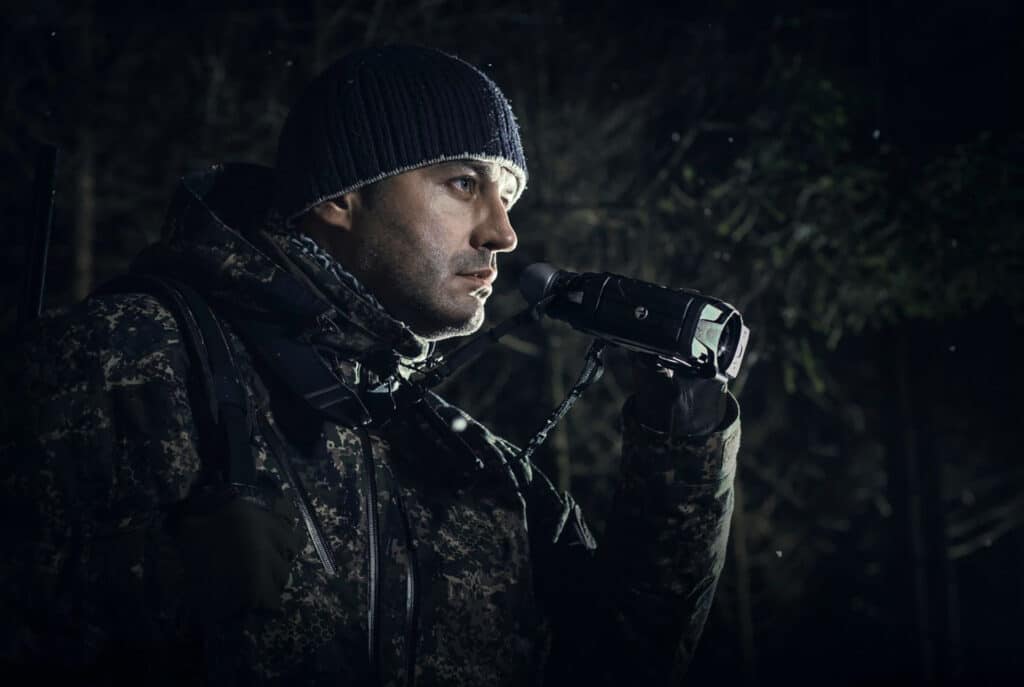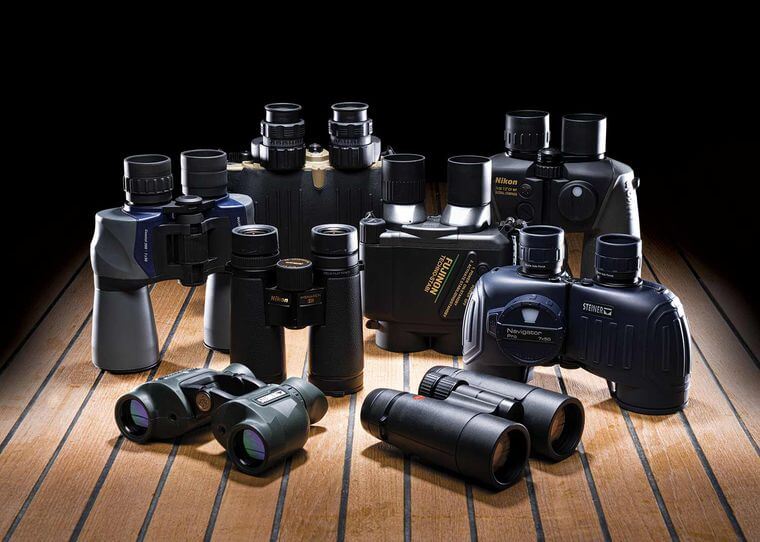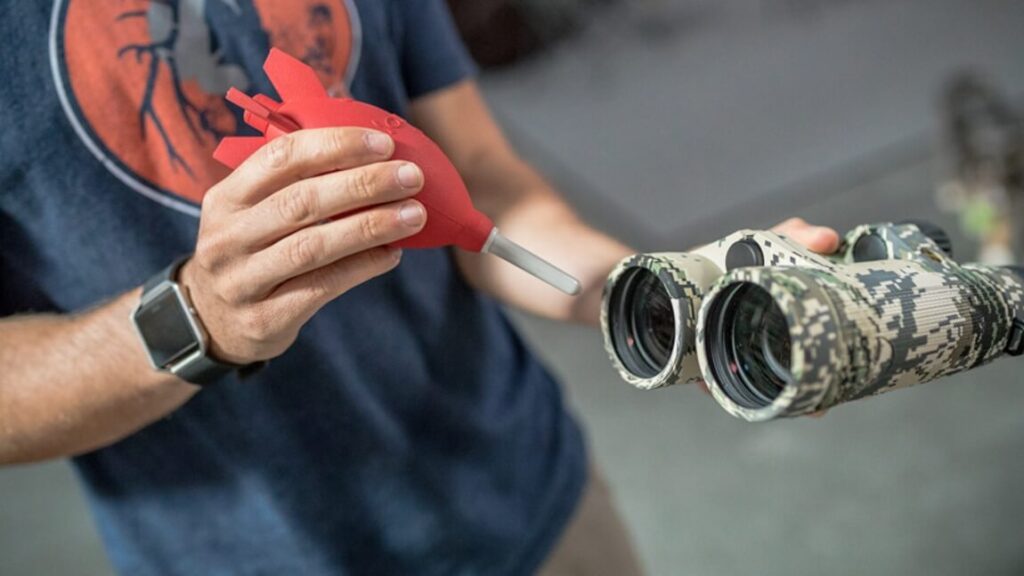



Spending about $1000 on a pair of binoculars is not for everyone. That said, even if you have the budget and are willing to pay, you still need to approach the purchase with caution. After all, not all $1000 binos are worth the money. A Vortex Kaibab 18×56 Review is necessary because this pair of binoculars is in the $1000 price range, and potential users would like to know how well the binos live up to the billing. As such, we explore the good, the bad, and the in-betweens of owning this pair below.
The pricing of this pair of binoculars already places them as a premium product in the market, and buyers will therefore expect premium performance. Additionally, they want top-quality construction and extra functionality that they wouldn’t normally find in cheaper bino models. As for whether the product lives up to that expectation, you can find out below.
The Vortex Kaibab 18×56’s overall performance is exceptional and worthy of a $1000 device, and there are several reasons for this. One is the top-tier optics used in making the binos, including some HD components. Consequently, the binos have excellent light-gathering capabilities and are designed so that most of this light reaches your eyes without distortion.
Additionally, the pair of binos is ruggedly designed to handle use in adverse weather conditions, whether rain, dust, or even fog. In terms of use, you get a relatively close focus distance for high-powered binos with easy focusing adjustments. There’s also the eye relief that caters to most of the glasses-wearing population.
There are some drawbacks expected with such high magnification levels, such as a reduced field of view, shakiness, and lower performance in low light. However, for most people, this is what they sign up for during purchase, and they more or less expect these drawbacks.
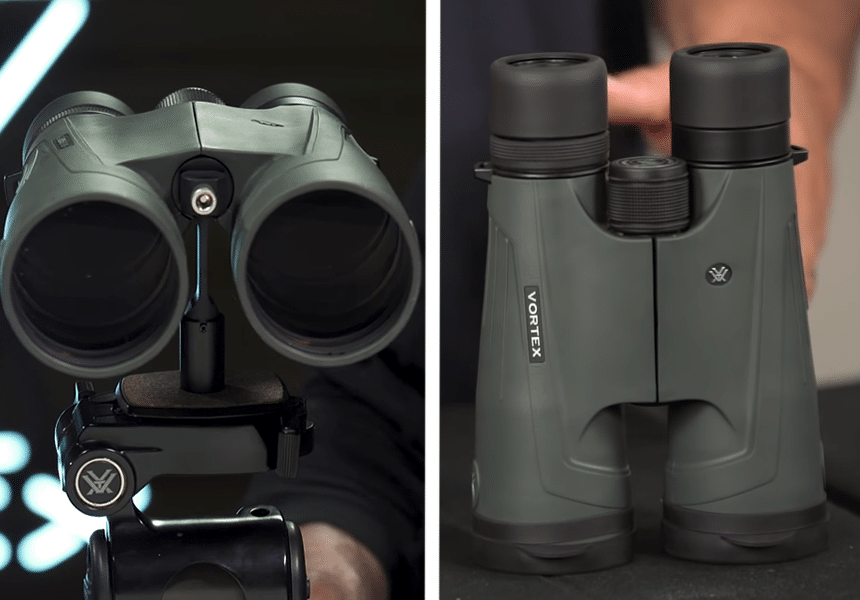
Notably, these binos are made with 56mm objectives which are significantly larger than most standard binoculars. As such, you’ll quickly notice that the chassis is bigger to support these lenses. Of course, it’s heavier as well. Apart from that, they’re pretty standard, run-off-the-mill roof prism binoculars with straight barrels.
The exterior construction consists of hard rubber with lines that enhance grip. That said, the rubber isn’t the only protective feature on the outside of the binos. There’s the ArmorTek® coating on all exterior lens surfaces that protects them from scratches, oils, fingerprints, and dust. The gadget is also argon purged on the interior to keep out water and fog.
As for the eyecups, buyers get 16mm eye relief which caters to most of the population, and you only need to use the diopter on the right eyecup to make adjustments. That said, the eyecups can also be twisted up and down at will.
There’s even the large centrally located focus wheel which is pretty standard in binoculars that makes focus adjustments easy. Lastly, the interpupillary distance for this model ranges from 6cm to 7.6cm, and it’s better to ensure your face fits these parameters before purchase.
Nevertheless, the overall construction of the binos is downright impressive.
Of course, the performance of the Vortex Kaibab 18×56 is brought about by the quality of the optics. From what we can see, the binos have one of the most advanced optical systems in terms of lenses, design, coating, and more, and this is partly why they’re so pricey.
First, we mentioned the 56mm objectives, which are undoubtedly larger than what you get from most standard binoculars. This allows them to collect more light which is necessary for viewing objects in the distance.
Another optical element is the fully multi-coated design of the optical pathway. According to the Merriam-Webster dictionary Trusted Source Multicoated Definition & Meaning - Merriam-Webster The meaning of MULTICOATED is having multiple coatings in order to reduce the appearance of light reflections in the lens. How to use multicoated in a sentence. www.merriam-webster.com , this means there are multiple optical coatings applied to the lenses in microscopically thin layers.
One example is the Dielectric Mirror Coatings. What Is Trusted Source What is dielectric material? - Definition from WhatIs.com A dielectric material is a substance that is a poor conductor of electricity, but an efficient supporter of electrostatic fields. whatis.techtarget.com describes dielectric materials are substances with poor electrical conductivity but the capacity to support electrostatic fields. Microsoft Academic further adds that reflectivity at different light wavelengths depends on the type and thickness of the dielectric layers used.
The Dielectric Mirror Coatings used in the Vortex Kaibab 18×56 binos are designed to reflect more than 99% of light. As for the glass components that let light through to the user’s eye, they feature XR Plus anti-reflection coatings which is top-of-the-line coating in Kaibab’s arsenal of tools.
There is even premium extra-low dispersion glass which is instrumental in guiding individual wavelengths of light to where they are supposed to go. Lastly, the lenses used in this model of binos come with three elements which is a step up from the usual two in regular binos. This allows for an extra wavelength of light to be brought into focus.
Also worth noting is that these binos feature a roof prism design, and hence the extra coating and use of high-quality glass components may be necessary to prevent light loss.
Overall, all the bells and whistles used with regard to the coatings and the design of the glass elements do not go to waste. In sufficiently lit conditions, you won’t find anything wrong with the image quality. However, you also have to consider use in darker scenarios.
Darkness causes pupil dilation, so your eyes can deal better with the reduced light coming in. However, this makes your pupils bigger than the binos’ exit pupils, which can introduce darkness in some areas of the image. That said, image quality is still pretty satisfactory.
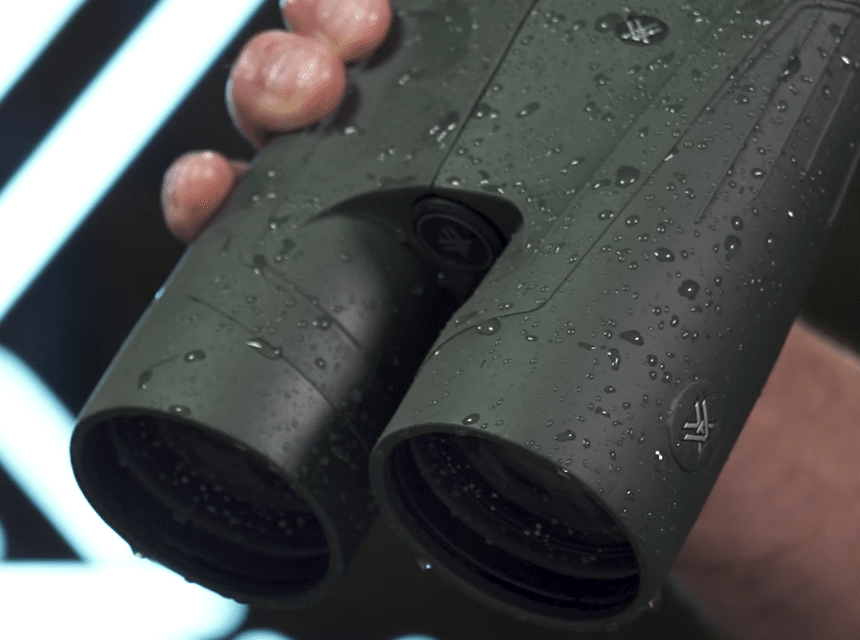
The durability of the Vortex Kaibab 18×56 binos is not something that’s in doubt. They come with an O-ring sealed chassis which keeps impurities such as dust and moisture from damaging the internals of the binos. Additionally, there’s the rubber exterior that not only adds grip but also cushions the gadget in case you drop them.
Lastly, there’s the ArmorTek® coating that lines the exterior surfaces of the lenses. Consequently, it can prevent minor damage, e.g., scratches, dust accumulation, oils, and even fingerprints, making the lenses easier to clean.
These binos are meant to be used with tripods, so it’s no surprise the purchase is often bundled with one. This is in addition to a Uni-dapter quick-release tripod adapter for easy attachment and detachment. Other accessories you may find in the pack include a rainguard, lens cloth, deluxe padded case, and a comfort neck strap.
Worth noting is that the quality of these accessories is top-notch and quite indicative of the price.
As mentioned above, the Vortex Kaibab 18×56 binos are priced at about $1000. As such, they will cost you a pretty penny, but with the performance and quality, this price point may be worth it. That said, there’s also additional protection for your investment, given the lifetime warranty.
Other features in the Vortex Kaibab 18×56 binos include the field of view and the exit pupil. As for the former, you get a 3.7° viewing angle that translates into 194 ft at 1000 yards. With the latter, you get a 3.1mm diameter exit pupil, which is excellent when your pupils are constricted but a problem when they’re dilated to a 5mm diameter or larger.
| PROS |
CONS |
|
|
As for how you can use the binoculars, they’re great for hunting and things that involve aiming at faraway objects and shooting, such as archery. Also, if you’re going to mount them on a tripod and keep them stationary, they’re a good bet for watching the ocean and ships. However, the narrow field of view may be a problem with fast-moving objects such as planes.
Ultimately, the Vortex Kaibab 18×56 review above shows that the binos were made for people with a little more budgetary leeway, and they’re well compensated in terms of features and overall performance. They are intended for long-distance viewing, and they do well in that regard. As such, we feel they provide sufficient value to buyers to match the price point.

